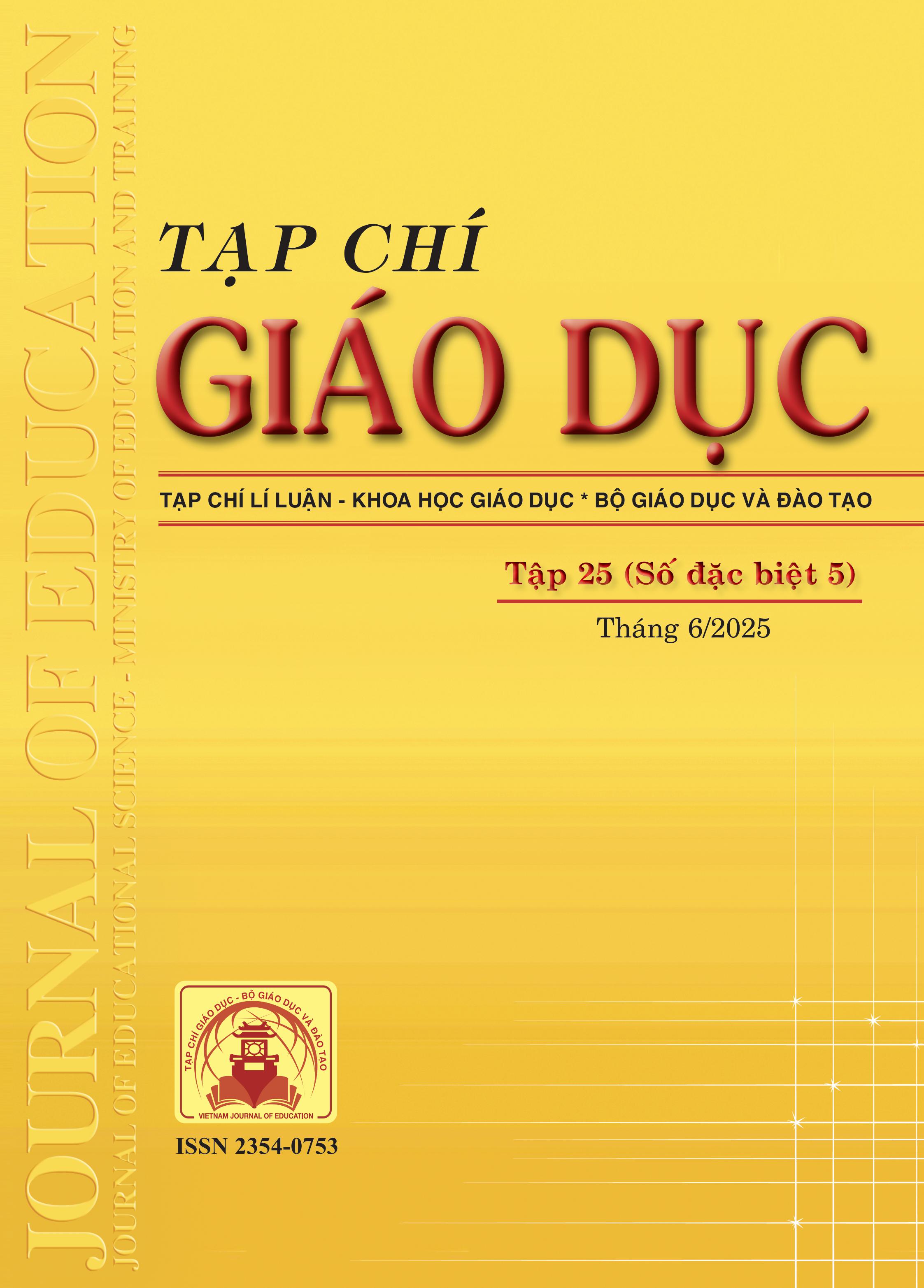Sử dụng ứng dụng di động trong dạy học chủ đề “Âm thanh” (Khoa học tự nhiên 7) nhằm bồi dưỡng năng lực số cho học sinh
Tóm tắt
The 2018 general education program is built with the orientation of developing students' qualities and competence, emphasizing the role of technology in teaching to meet the requirements of the digital transformation era. However, in practice, the teaching process of the topic “Sound”, a subject of Natural Science 7, still faces difficulties due to its abstract nature and lack of teaching equipment. Meanwhile, mobile phones have the potential to support effective teaching through simulation and measurement applications. The study proposes a process of using mobile applications in teaching the “Sound” topic (Natural Science 7) to foster students' digital skills and illustrates this process in teaching the lesson “Sound reflection - Anti-noise pollution”. To achieve high efficiency, teachers need to choose applications that are suitable for the lesson objectives, easy to use and capable of supporting simulation or measurement of scientific phenomena; at the same time, teachers need to innovate teaching methods and update technology to adapt to the current requirements of teaching innovation.
Tài liệu tham khảo
Baran, E. (2017). Evaluating Mobile apps for STEM Education with In-service Teachers [Doctoral dissertation, Middle East Technical University]. METU Open Access.
Bộ GD-ĐT (2018). Chương trình giáo dục phổ thông môn Khoa học tự nhiên (ban hành kèm theo Thông tư số 32/2018/TT-BGDĐT ngày 26/12/2018 của Bộ trưởng Bộ GD-ĐT).
Bộ GD-ĐT (2025). Thông tư số 02/2025/TT-BGDĐT ngày 24/01/2025 quy định Khung năng lực số cho người học.
Kuhn, J., & Vogt, P. (2013). Smartphones as experimental tools: Different methods to determine the gravitational acceleration in classroom physics by using everyday devices. European Journal of Physics Education, 4(01), 16-27.
Nguyễn Hoàng Anh, Quách Nguyễn Bảo Nguyên, Phạm Thị Ánh Ngọc, Nguyễn Trường Vũ, Phùng Việt Hải, Trần Quỳnh (2025). Dạy học chủ đề “mô tả sóng âm” (Khoa học tự nhiên 7) thông qua thí nghiệm mô phỏng trên điện thoại thông minh theo hướng phát triển năng lực tự học cho học sinh. Tạp chí Giáo dục, 25(3), 36-40.
Ryan, C., & James, L. (2020). Phyphox app in the physics classroom. The Physics Teacher, 58(8), 606-607. http://dx.doi.org/10.1119/10.0002393
Sánchez, J., & Olivares, R. (2011). Problem solving and collaboration using mobile serious games. Computers & Education, 57(3), 1943-1952. https://doi.org/10.1016/j.compedu.2011.04.012
Sharma, V., Kumar, V., Pathak, P., & Gill, F. S. (2024). Analysis of sound intensity for male voice using smartphone sensor. In Emerging Trends in Engineering and Technology. CRC Press. http://dx.doi.org/10.1201/9781003559085-57
Vieyra, R., Vieyra, C., Jeanjacquot, P., Marti, A., & Monteiro, M. (2015). Turn your smartphone into a science laboratory. The Science Teacher, 82(9), 32-40. https://doi.org/10.2505/4/tst15_082_09_32
Wijayanti, S. A., Handhika, J., & Parno, P. (2022). Contextual Science Learning using Smartphone Audio Sensor Application (Phyphox) on Restitution Coefficient Measurement. Jurnal Penelitian dan Pembelajaran IPA, 8(2), 256-271. http://dx.doi.org/10.30870/jppi.v8i2.13400
Yusuf, I., Setyosari, P., Kuswandi, D., & Ulfa, S. (2024). The Frontier Areas' Student Acceptance of Physics Funbased Mobile Application: Incorporating the Process-Oriented Guided-Inquiry Learning (POGIL) Strategy. Participatory Educational Research, 11(6), 152-171. http://dx.doi.org/10.17275/per.24.84.11.6
Đã Xuất bản
Cách trích dẫn
Số
Chuyên mục
Giấy phép

Tác phẩm này được cấp phép theo Ghi nhận tác giả của Creative Commons Giấy phép quốc tế 4.0 .












